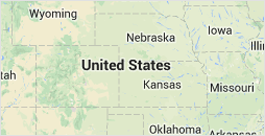Jeson Clarke
PHONE NUMBER : ------
Map

What is Sod?
In the world of property improvement and landscaping, sod plays an integral role in giving you the pristine lawn you've always wanted. Sod, which some also call "turf," is pregrown grass that you can roll out and plant over properly prepared soil. Sod offers a quick way to plant grass, giving your curb appeal an instant boost instead of waiting for seed to grow.
Types of Sod
Before you use a sod calculator and start working with a provider, you must decide what type to get. Several grass varieties are available, and what's right for you will typically depend on where you live and your climate.
In most of the north and midwestern regions of the United States, cold-season grass is ideal. It thrives in temperatures between 60 and 70 degrees Fahrenheit. Popular cold-season sod varieties include Blue Grass, Rye and Fescue.
In warmer regions of the United States, warm-season sod that flourishes in temperatures between 80 and 95 degrees Fahrenheit is your best bet. Cultivars like St. Augustine, Bermuda, Zoysia and Centipede are common in areas that experience hot summers. Calculate your sod needs with ease! Click here to visit this website and use our sod calculator for accurate measurements and hassle-free landscaping.
Other Considerations
What sod varieties work best in your climate is important. However, all properties are different. Some grass varieties grow differently based on environmental conditions. Take, for example, sun exposure. Sod is grass, and grass needs sun to reach their full potential. That said, some sod types can tolerate some shade.
Centipede grass needs only about six hours of partial sun. Meanwhile, Oaklawn and Tennessee Hardy are more shade-tolerant than many alternatives.
You should also think about the sod's purpose. Bermuda is a sod that you often see in high-traffic areas due to its durability. However, St. Augustine grass isn't as resilient. Therefore, it's ideal for low-traffic properties.
Another thing to consider is maintenance requirements. Sod needs watering and mowing to stay healthy. Otherwise, they can get unruly, experience mold issues, etc. After using a sod calculator and connecting with sod providers, it's important to discuss how much maintenance you're willing to do yourself or hire professionals to handle.
Maintenance requirements could impact the enjoyment of your freshly laid sod and the long-term costs to keep your property looking great.
Author Resource:-
Jeson Clarke advises people about sod installation cost estimate for your project. You can find his thoughts at sod estimation blog.
